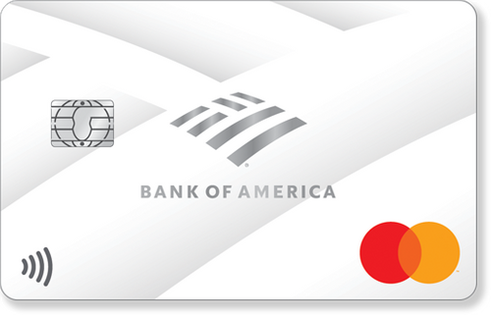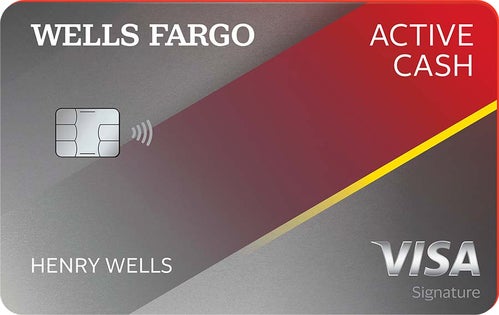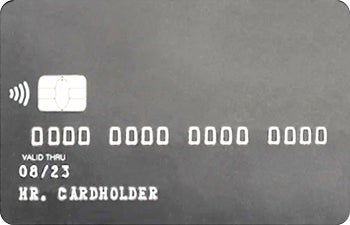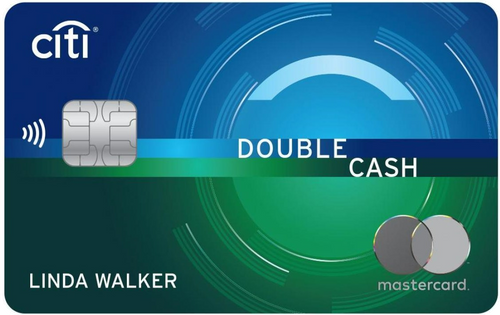This story is part of Taxes 2024, CNET’s coverage of the best tax software, tax tips and everything else you need to file your return and track your refund.
If tax day for you is lurking like a black cloud, consider using a credit card to cover the tab. When I was a freelancer, my tax bill was over $5,000. While other folks celebrated their refunds, I was preparing to pay the IRS a hefty sum.
To get some much-needed breathing room, I applied for a credit card that featured an introductory 0% purchase APR and a high enough cash-back rate to cover any processing fees. By using it to cover my tax bill, I was able to break up that bill into more than 12 payments, at 0% interest.
What to know before using a credit card to pay your taxes
If you’re facing other debt or working to repair your credit, you should consider an IRS payment plan before turning to a credit card.
Even the best credit cards for bad credit don’t offer enough perks to make charging your tax bill worthwhile. However, if you have good credit, you can use a card that earns you some combination of rewards, a welcome bonus and introductory interest-free financing to make the transaction advantageous. That’s exactly what I did when I was faced with this dilemma two years back.
But you’ll need to do some math to make sure your credit card won’t cost you more. The IRS and state websites typically charge credit card processing fees of up to 2%, while online tax software services may charge you as much as 2.49%. So you’ll want the right mix of credit card benefits -- plus no annual fee -- to neutralize processing fees and come out on top.
How do you pay taxes with a credit card?
You can make your payment directly on the IRS website, with your choice of three different third-party payment processors for a credit or debit card.
Each processor charges about 2%, but it can be more expensive if you use a credit card to file your taxes using an online software service like TurboTax or H&R Block. The fees are broken down in this chart on the IRS website. You can pay directly by selecting “make a payment” under the payment processor of your choosing.

You can also pay by calling the payment processors directly using the numbers listed on the IRS site. The same fees will apply.
The IRS says your transaction is safe and secure, and your information will be used solely to make your payment. And it notes that the agency doesn’t see any part of the card service fee, which you can deduct for business taxes. If you’re worried about security, though, using a virtual credit card can offer additional privacy.
There are some limits on the number of credit card payments you can make with the IRS per year -- you’re limited to two in most cases, and you can use two different credit cards for each payment if you want. If you own a business or are self-employed, you can also use your credit card to make estimated tax payments throughout the year.
The benefits of paying taxes with a credit card
If you’re going to pay your taxes with a credit card, you can rack up some bonus rewards points or get cash back.
I used the Wells Fargo Active Cash® Card to pay my taxes, which earns 2% cash rewards. Its rewards rate was high enough to cover the fee charged by the payment processor, and -- at the time -- its 0% introductory purchase APR offer let me spread the payment across 15 months from account opening (before the standard variable APR of 20.24%, 25.24% or 29.99% applied). The card currently only offers a 0% intro APR for 12 months from account opening on purchases and qualifying balance transfers (then 20.24%, 25.24%, or 29.99% variable APR).
While the rewards were nice (I didn’t take home too much after the fee was covered), the true draw for me was being able to take my time with the payment without worrying about interest and earning the card’s welcome offer, which essentially knocked $200 off my tax bill. The Active Cash offers $200 in cash rewards after spending $500 in purchases within the first three months -- a threshold easily reached by my taxes.
Even if you have the money to pay off your tax bill, you might consider paying with a credit card if your tax bill is large enough to help you earn a welcome bonus or some extra rewards. Just be sure your credit card’s rewards rate exceeds the payment processor fee.
For example, if you’re paying with a credit card using Pay1040, the fee is 1.87%. It’s worth charging your taxes only if you’re using a card with a reward rate that earns at least 2%. And if the card doesn’t come with an introductory purchase APR offer, make sure you can pay off the balance in full before interest begins accruing. Otherwise, you’ll be better off signing up for an IRS payment plan.
But be careful -- even if your card gives you more time to pay down your purchase. If you don’t pay off the balance within the given introductory APR time frame, the balance will accrue interest at the card’s variable rate. And with average credit card interest rates hovering above 20% APR, you could end up with an even more expensive payment than you started with.
Tips for using a credit card to pay off your taxes
Here’s what to keep in mind if you use a card to pay your taxes, particularly one with an introductory purchase APR:
- Figure out how much you’ll need to pay monthly. The key to successfully using an intro APR comes down to getting the balance to zero before the promotional period ends. To do that, you’ll have to calculate how much you’ll need to pay monthly. Divide your card balance by the number of months in the introductory offer and you’ll have your answer.
- Don’t use the card for any new purchases. It’s hard enough to pay down a large balance in time before it starts accruing interest. If you’re adding new purchases on top of what you owe, it’ll take even longer.
- Don’t get enticed into overspending. If your tax bill isn’t enough to earn the card’s welcome bonus, don’t tack on new purchases to earn it. Focus instead on paying down the balance. Once your taxes are paid off, if there’s still time, you can focus on trying to earn the bonus through normal spending habits. Be intentional – you’re trying to use the credit card to improve your finances. Any overspending or any interest charges will set you back rather than put you ahead.
Best credit cards for paying your taxes
If you do decide to pay your taxes with a credit card, below are our picks and partner offers for the cards with the best combinations of rewards rates, welcome bonuses and introductory 0% APR offers to mitigate the burden of putting your taxes on a credit card.
Wells Fargo Active Cash® Card
I applied for the Active Cash to pay off my tax bill for a few reasons. One, I could get an additional 12 months from account opening to pay off my taxes before the standard 20.24%, 25.24% or 29.99% variable APR applied. Two, its 2% cash-rewards rate was high enough so that the rewards could be used to cover any processing fees. Three, I could earn the card’s welcome offer in one fell swoop and use it to cover a small portion of my tax bill. And finally, I’d have one of the best flat-rate rewards cards to continue to use once my balance had been paid off.
Thinking long-term is essential, too. Once your taxes are paid off, you’ll want a card you can continue to use and benefit from. For me, that made the Wells Fargo Active Cash an easy pick.
See our full review of the Wells Fargo Active Cash Card for more details.
Pros
Earn unlimited 2% cash rewards on purchases
Easy-to-earn welcome bonus
No annual fee
Introductory APR offer on purchases and qualifying balance transfers
Up to $600 in cell phone damage or theft protection subject to a $25 deductible
Cons
No outstanding cardholder perks or statement credits
3% foreign currency conversion fee
Rewards must be redeemed in $20 or $25 increments for some redemption options
We rate credit cards using our Rewards / Travel methodology for cards tailored to earning rewards. We focus on each card’s reward potential, the value you get compared to the card’s cost, the benefits and the card’s rates and fees. Credit card issuers have no say or influence in our ratings. How we rate credit cards
- Intro Balance Transfer APR
- 0% intro APR for 12 months from account opening on qualifying balance transfers
- Intro Purchase APR
- 0% intro APR for 12 months from account opening
- Regular APR
- 20.24%, 25.24%, or 29.99% Variable APR
- Balance Transfer Fee
- up to 5%, min: $5
I applied for the Active Cash to pay off my tax bill for a few reasons. One, I could get an additional 12 months from account opening to pay off my taxes before the standard 20.24%, 25.24% or 29.99% variable APR applied. Two, its 2% cash-rewards rate was high enough so that the rewards could be used to cover any processing fees. Three, I could earn the card’s welcome offer in one fell swoop and use it to cover a small portion of my tax bill. And finally, I’d have one of the best flat-rate rewards cards to continue to use once my balance had been paid off.
Thinking long-term is essential, too. Once your taxes are paid off, you’ll want a card you can continue to use and benefit from. For me, that made the Wells Fargo Active Cash an easy pick.
See our full review of the Wells Fargo Active Cash Card for more details.
Pros
Earn unlimited 2% cash rewards on purchases
Easy-to-earn welcome bonus
No annual fee
Introductory APR offer on purchases and qualifying balance transfers
Up to $600 in cell phone damage or theft protection subject to a $25 deductible
Cons
No outstanding cardholder perks or statement credits
3% foreign currency conversion fee
Rewards must be redeemed in $20 or $25 increments for some redemption options
We rate credit cards using our Rewards / Travel methodology for cards tailored to earning rewards. We focus on each card’s reward potential, the value you get compared to the card’s cost, the benefits and the card’s rates and fees. Credit card issuers have no say or influence in our ratings. How we rate credit cards
- Intro Balance Transfer APR
- 0% intro APR for 12 months from account opening on qualifying balance transfers
- Intro Purchase APR
- 0% intro APR for 12 months from account opening
- Regular APR
- 20.24%, 25.24%, or 29.99% Variable APR
- Balance Transfer Fee
- up to 5%, min: $5
Discover it® Cash Back
The Discover it® Cash Back* offers the Unlimited Cashback Match™ as a welcome bonus, meaning in addition to the 1% you earn when you make a transaction with this card, Discover will match your total cash back at the end of your first year. This nets you a total of 2% to cover the processor fees -- and then you can also take advantage of the 0% introductory APR on purchases for 15 months (18.24% to 28.24% variable APR thereafter).
See our full review of the Discover it Cash Back for more details.
We rate credit cards using our Rewards / Travel methodology for cards tailored to earning rewards. We focus on each card’s reward potential, the value you get compared to the card’s cost, the benefits and the card’s rates and fees. Credit card issuers have no say or influence in our ratings. How we rate credit cards
- Intro Balance Transfer APR
- 0% for 15 months
- Intro Purchase APR
- 0% for 15 months
- Regular APR
- 18.24% – 28.24% Variable APR
- Balance Transfer Fee
- 3% intro balance transfer fee, up to 5% fee on future balance transfers (see terms)*
The Discover it® Cash Back* offers the Unlimited Cashback Match™ as a welcome bonus, meaning in addition to the 1% you earn when you make a transaction with this card, Discover will match your total cash back at the end of your first year. This nets you a total of 2% to cover the processor fees -- and then you can also take advantage of the 0% introductory APR on purchases for 15 months (18.24% to 28.24% variable APR thereafter).
See our full review of the Discover it Cash Back for more details.
We rate credit cards using our Rewards / Travel methodology for cards tailored to earning rewards. We focus on each card’s reward potential, the value you get compared to the card’s cost, the benefits and the card’s rates and fees. Credit card issuers have no say or influence in our ratings. How we rate credit cards
- Intro Balance Transfer APR
- 0% for 15 months
- Intro Purchase APR
- 0% for 15 months
- Regular APR
- 18.24% – 28.24% Variable APR
- Balance Transfer Fee
- 3% intro balance transfer fee, up to 5% fee on future balance transfers (see terms)*
BankAmericard® credit card

The BankAmericard® credit card is a great choice if you’re looking for a card with a long 0% introductory APR for purchases and balance transfers. Cardholders will get 18 billing cycles to pay off new purchases or a transferred balance before the standard APR of 16.24% to 26.24% variable applies. Balance transfers must be completed within 60 days of opening the account.
While the card offers no rewards, which means you’ll have no buffer between you and any processing fees, it will give you one of the longest time periods on the market to pay off your taxes.
We rate credit cards using our balance transfer / Intro APR methodology for cards whose primary feature is a promotional period where new purchases or a transferred balance will accrue no or low interest for a period of time. We rank these credit cards based on the quality of their introductory offers, fees, lasting value and standard rates. Credit card issuers have no say or influence in our ratings. How we rate credit cards
- Intro Balance Transfer APR
- 0% Intro APR for 18 billing cycles for any BTs made in the first 60 days. A fee of 3% for 60 days from account opening, then 4% will apply.
- Intro Purchase APR
- 0% Intro APR for 18 billing cycles for purchases
- Regular APR
- 16.24% – 26.24% Variable APR on purchases and balance transfers
- Balance Transfer Fee
- 3% for 60 days from account opening, then 4%
The BankAmericard® credit card is a great choice if you’re looking for a card with a long 0% introductory APR for purchases and balance transfers. Cardholders will get 18 billing cycles to pay off new purchases or a transferred balance before the standard APR of 16.24% to 26.24% variable applies. Balance transfers must be completed within 60 days of opening the account.
While the card offers no rewards, which means you’ll have no buffer between you and any processing fees, it will give you one of the longest time periods on the market to pay off your taxes.
We rate credit cards using our balance transfer / Intro APR methodology for cards whose primary feature is a promotional period where new purchases or a transferred balance will accrue no or low interest for a period of time. We rank these credit cards based on the quality of their introductory offers, fees, lasting value and standard rates. Credit card issuers have no say or influence in our ratings. How we rate credit cards
- Intro Balance Transfer APR
- 0% Intro APR for 18 billing cycles for any BTs made in the first 60 days. A fee of 3% for 60 days from account opening, then 4% will apply.
- Intro Purchase APR
- 0% Intro APR for 18 billing cycles for purchases
- Regular APR
- 16.24% – 26.24% Variable APR on purchases and balance transfers
- Balance Transfer Fee
- 3% for 60 days from account opening, then 4%
Citi Double Cash® Card
The Citi Double Cash® Card is another option that gives you the opportunity to earn enough cash-back rewards to meet or exceed the processor fees. You earn 1% when you make the transaction, and another 1% when you make the corresponding payments.
See our full review of the Citi Double Cash Card for more details.
We rate credit cards using our Rewards / Travel methodology for cards tailored to earning rewards. We focus on each card’s reward potential, the value you get compared to the card’s cost, the benefits and the card’s rates and fees. Credit card issuers have no say or influence in our ratings. How we rate credit cards
- Intro Balance Transfer APR
- 0% intro for 18 months on Balance Transfers
- Intro Purchase APR
- N/A
- Regular APR
- 19.24% – 29.24% (Variable)
- Balance Transfer Fee
- There is an intro balance transfer fee of 3% of each transfer (minimum $5) completed within the first 4 months of account opening. A balance transfer fee of 5% of each transfer ($5 minimum) applies if completed after 4 months of account opening.
The Citi Double Cash® Card is another option that gives you the opportunity to earn enough cash-back rewards to meet or exceed the processor fees. You earn 1% when you make the transaction, and another 1% when you make the corresponding payments.
See our full review of the Citi Double Cash Card for more details.
We rate credit cards using our Rewards / Travel methodology for cards tailored to earning rewards. We focus on each card’s reward potential, the value you get compared to the card’s cost, the benefits and the card’s rates and fees. Credit card issuers have no say or influence in our ratings. How we rate credit cards
- Intro Balance Transfer APR
- 0% intro for 18 months on Balance Transfers
- Intro Purchase APR
- N/A
- Regular APR
- 19.24% – 29.24% (Variable)
- Balance Transfer Fee
- There is an intro balance transfer fee of 3% of each transfer (minimum $5) completed within the first 4 months of account opening. A balance transfer fee of 5% of each transfer ($5 minimum) applies if completed after 4 months of account opening.
*All information about the Discover it Cash Back and the BankAmericard has been collected independently by CNET and has not been reviewed by the issuer.
The editorial content on this page is based solely on objective, independent assessments by our writers and is not influenced by advertising or partnerships. It has not been provided or commissioned by any third party. However, we may receive compensation when you click on links to products or services offered by our partners.




